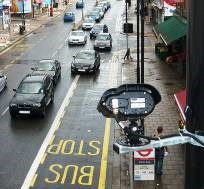
Road Network Operations
& Intelligent Transport Systems
A guide for practitioners!

Road Network Operations
& Intelligent Transport Systems
A guide for practitioners!
When using ITS equipment for enforcement purposes, the equipment must be certified according to the regulations of the country. It would not otherwise be workable to prove the integrity of the equipment each time the evidence it produces is used in court. The certification process allows the whole court to accept that the evidence is truthful and reliable. It removes what would otherwise be a standard defence: that the equipment does not function accurately or within the law being applied. (See Case Study: Type Approval (UK))
Different, un-harmonised, national certification regimes are not popular with equipment manufacturers who have customers in more than one country with different traffic laws within which the equipment has to operate effectively. There has been some work within the EU towards achieving agreement on issues of certification – and it may be that in the future the situation will become less fragmented within the EU and more globally.
When using evidence in court, produced by an ITS application – such as parking monitoring systems, speed cameras, or an ANPR camera at a bus stop (as shown in below) – the images or data produced as evidence must be tied to the date, time, location, and vehicle. The purpose of the certification process is to ensure that the design and construction of equipment is fit for purpose. In other words, if the certified equipment has recorded that a vehicle was in a certain location at a certain time, this is beyond question, provided that the equipment is installed and maintained correctly. Information has to be recorded accurately and stored securely, so that it cannot be corrupted or changed. The authority may need to demonstrate that they have adhered to the maintenance and calibration regime laid down during the certification process.

In courts where uncorroborated automated evidence is not allowed, an officer will need to attend to testify that they observed the activity captured by the system, at the time recorded by the system.
The legal processes and equipment certification connected with using ITS equipment for road traffic law enforcement can only be successfully assessed by collaborative working of legal and technical experts. It is very rare to find all the expertise needed in any one individual – whether it be the technical expertise relevant to camera lens grinding, the data management expertise needed for secure data transfer, or expertise in road traffic law.
There are examples from different countries of how this may be achieved. In some countries, a national transport research facility undertakes this work and advises practitioners. In others, the national police force has the research facilities to do so. Another solution is for the Justice Department (or its equivalent) to be the provider of this expertise. Informal forums where equipment suppliers, users, and legal experts can come together are also very useful. These groups may be run by police forces, equipment manufacturers, or national ITS associations.
Anyone considering introducing automated enforcement into a country for the first time should seek informal advice from colleagues in countries where it is established practice to use ITS for enforcement. It will never be possible to simply transfer systems across borders, due to different national legal frameworks – but it will be invaluable to find out how others have ensured that their systems are legally and technically robust. Contacts at government, police force, or national ITS association level can help with this.